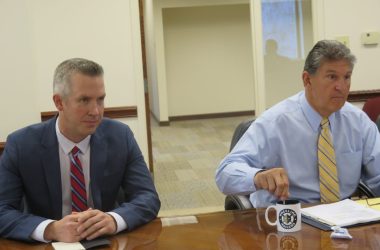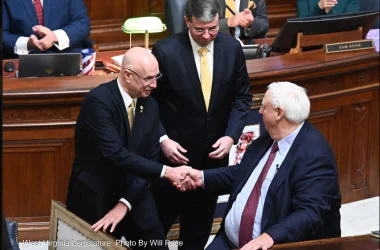By JIM ROSS
The State Journal
CHARLESTON, W.Va. — A change is coming to how students in West Virginia’s K-12 public education system learn, an expert said Wednesday. It may take a while, but the evolutionary change is part of a nationwide trend.
The change is called personalized education. It moves away from the teacher-centered model and toward one where students are more in control of their learning, much of which is through hands-on experience.
Personalized learning is not something West Virginia has adopted, but it has been tried in South Carolina and elsewhere at the district level. Eventually it will take hold in West Virginia, predicted Amelia Courts, president and CEO of the Charleston-based Education Alliance.
“This kind of big systemic change takes time. I think that’s where we’re moving as a country.”
Personalized learning, competency-based progressions and flexible learning environments were the focus of the annual West Virginia Education Summit organized by the Education Alliance.
As described by most of the summit’s presenters, personalized learning is the opposite of the traditional instruction method, which presents learning as something done in a factory — a teacher presents the same information to a given number of students at the same time and they all are expected to master it in a given time before moving on to the next step.
Susan Patrick, president and CEO of the International Association for K-12 Online Learning, said most schools in the United States have a narrow definition of academic success. Education is delivered to students instead of placing students at the center of learning, she said.
“The goal is really about building knowledge around students — students becoming creators of knowledge, students understanding the context of knowledge,” Patrick said.
Active learning “is more effective in retention than passively becoming receptacles for content knowledge,” she said.
Marie Watson, the principal of an elementary school in South Carolina where personalized learning has been implemented, said the idea is to have students learn the lesson and move on. If a child has not learned the lesson, he or she keeps working on it with support, she said.
“Quitting is not an option,” she said.
Linda Lavender, superintendent of another district in South Carolina, said the change from one system to another has been slow and difficult.
“We’ve been at this for 12 years now. I feel like we’re trying to move mountains,” she said. “I feel like we’re flying a plane and we’re building it in the air.”
Personalized learning is not just for students, but teachers’ jobs are changed, too, Lavender said.
“Teacher-centered to student-centered is a very difficult leap for teachers. It takes time,” she said. Change is difficult for students, too, she said.
The system allows students to pursue their interests and take ownership of their learning, she said.
Two state officials were the last to speak.
Secretary of Commerce H. Wood “Woody” Thrasher talked about how most new jobs in the state don’t require a four-year college degree, but employers are looking for particular skills.
State school Superintendent Steve Paine said a new policy reduces the number of courses that students must complete to earn a diploma, and it supports the concept of early enrollment in college — “as early as the 10th grade.”
Under the policy, more high school students will earn an associate’s degree before they graduate from high school, he said.
For the long term, students need a solid foundation in literacy and numeracy, but they also need skills such as critical thinking, Paine said.
“We’re trying to build the labor force that Secretary Thrasher needs,” he said.
See more from The State Journal





